In this article, with the help of photos, we will learn to identify Redwood trees (Genus: Sequoia, Family: Cupressaceae) as well as how and when their pollen spreads.
| Redwood (Genus: Sequoia) | Pollen allergy profile |
|---|---|
| Pollen season | Winter and early Spring. |
| Pollination type | Wind-pollinated. When in bloom trees release copious pollen into air. |
| Cross-reactivity to other pollen | Not known. |
| Pollen source | Small, 1 t 2 mm long, male yellow cones on the tips of the leaves |
| Gender | Monoecious: Separate male and female cones bloom on the same tree. |
| Fruit | Seed cones (see pictures below) |
| Tree shape | Pyramidal canopy |
How to identify Redwood or Sequoia trees?
The majestic redwood and sequoia trees are the earth’s biggest and oldest living things! [3] The evergreen trees belong to the Cupressaceae, or cypress, family.
Redwood trees (Genus: Sequoia) are pyramid-shaped conifers that can grow taller than 300 feet, but in the city landscapes are often 30 to 100 feet tall. Their dark reddish-brown trunk can be wider than 20 feet, but in the cities, they are generally 3 to 8 feet wide. They produce seed cones that are much smaller than the pine family’s ranging from 3/4 inch to 3 inches tall.
There are two species of Sequoia common in California – Sequoia sempervirens (coast redwood) and Sequoiadendron giganteum (giant sequoia). A third species
The giant sequoia’s natural habitat is the groves on the western slopes of the Sierra Nevada mountain range of California. However, you may see some of them locally planted in the city parks and college campuses closer to the coast. The trees’ age is estimated to be 2500 to 3000 years and as the name suggests, they are the largest tree by mass on the planet. They can reach a maximum height of 325 feet and the trunk can reach a width of more than 30 feet[R4]
The name sequoia, when used standalone, generally refers to giant sequoia trees.
The coast redwood natural habitat is closer to the Pacific Ocean and they grow in groves as well but are abundant in the city landscapes. They are native to coastal California and southwest Oregon. The trees’ age is estimated to be 2000 years, and although they tend to be taller than giant sequoias, they are not as wide and thus are less voluminous than giant sequoias. They can reach a maximum height of 367 feet and their trunks can be 20 feet wide [R4].
The name redwood, when used standalone, generally refers to coastal redwood trees.
Tree shape and size
The trees are easy to recognize because of their tall pyramid-like structure and a strong thick trunk that rises straight up.
Only other common trees in California cities of similar stature are pines, firs, and cedars, but apart from having different leaf structures, they have cones that are almost 4x to 10x bigger than that of redwoods and sequoias.
Here are the pictures of coastal redwood and giant sequoia next to each other. As you can see, the giant sequoia packs more mass and is a little wider than the coastal redwood.
In the picture below, you can see that some coastal redwoods have denser foliage than the others. But, all have tall pyramidal structures.
Tree bark and trunk
The bark is reddish to grey-brown and can have deep furrows and ridges. The trunks rise straight up and can reach over 300 feet in height and over 20 feet in diameter.
The giant sequoias have thicker and heavier branches than the coast redwood.
During which months Redwood and Seqoia trees releases pollen?
Redwood and Sequoia trees release pollen during winter and spring along with other trees of the Cupressaceae family.
The pollen of Juniper, Cypress, Cedar, and Sequoia is hard to distinguish visually in the air samples, which is why they are all reported under the family classification Cupressaceae (cypress family).
In the San Francisco bay area, Cupressaceae (cypress family) pollen is found in our air surveys from Dec-1st to Apr-30th.
To learn more about the trees and their pollen, read on.
How does redwood (Sequoia) tree pollen spread?
Redwood (Sequoia) trees release pollen in the air and the wind can carry pollen many miles. Be assured, when the tree is pollinating in winter, abundant redwood and sequoia pollen arrives in each household of California and Oregon. Because the pollen can travel several hundred miles, it is possible for people in Washington and the West Coast of Canada to get some exposure as well.
The pollen is around 35 micrometers (0.035 mm) in size and it looks like a coin. The coastal redwood pollen has a papilla (a nose-like protrusion), which is visible only if the pollen lands on the microscope slide a certain way.
How to know if redwood and sequoia trees are releasing pollen?
Redwood and sequoia trees are monoecious, meaning the male and female cones both grow on the same tree. This means all mature trees are capable of releasing pollen. (Unlike some dioecious species of Casuarina, Ash, and Palm in which female trees do not release any pollen.)
The trees pollinate during winter and spring, and it is fair to assume that the trees are not releasing any pollen between May-1st through November-30th.
During the Nov-30th to Apr-30th period, it is difficult to judge the exact pollination period of redwood and sequoia trees just on the basis of air sampling. The similar-looking pollen of other Cupressaceae family trees like junipers, cypress, and cedars obfuscate the exact time frames when these two trees bloom among them.
However, visual inspection of the neighborhood trees can provide some guidance on when these trees pollinate. That said, this technique too has its limitations. The trees are so tall and it may be impossible for a person to examine most of the tree foliage except for a small section one could see from the ground.
If visual inspection is possible, then look for the male cones on the tips of the leaves.
In the month of October and early November, you will see some greenish-yellow male cones at the tip of the leaves, which means the pollination is about to begin in two to six weeks.
When the male cones turn bright yellow and powdery, the tree is releasing pollen. You will see this from December through March.
When all the male cones have turned brown, or, you see new leaves with no cones at all, the tree is no longer releasing pollen.
Final thoughts
Coast redwoods and Giant sequoias (Genus: Sequoia, Family: Cupressaceae) trees pollen is omnipresent in California and Oregon during winters and early spring. Their allergenicity is not well documented because most clinicians do not directly test for sensitivity to their pollen. Instead, they use Mountain Cedar (Juniperus Ashei), a known allergenic tree that grows only in Texas, as a proxy.
The other trees that release pollen alongside redwoods and sequoias during winter and spring are Alnus and Ash.
Sources
- https://plants.usda.gov/
- http://dendro.cnre.vt.edu/dendrology/factsheets.cfm
- https://www.nps.gov/parkhistory/online_books/cook/sec2.htm
References
- Allergy Plants by Mary Jelks, M.D.
- Plant identification terminology by James G. Harris and Melinda Woolf Harris (Second Edition)
- Sampling and indentifying pollens and Molds by E. Grant Smith
- The trees of golden gate park and San Francisco by Elizabeth McClintock PhD.
All pictures, unless otherwise credited to another source, are taken by the author and are copyrighted material. The pollen picture is taken in our aerobiology lab using an Olympus compound microscope. The use of pictures is permitted with a link back to the source page on the internet, or, an attribution to allerma.com on the printed material.

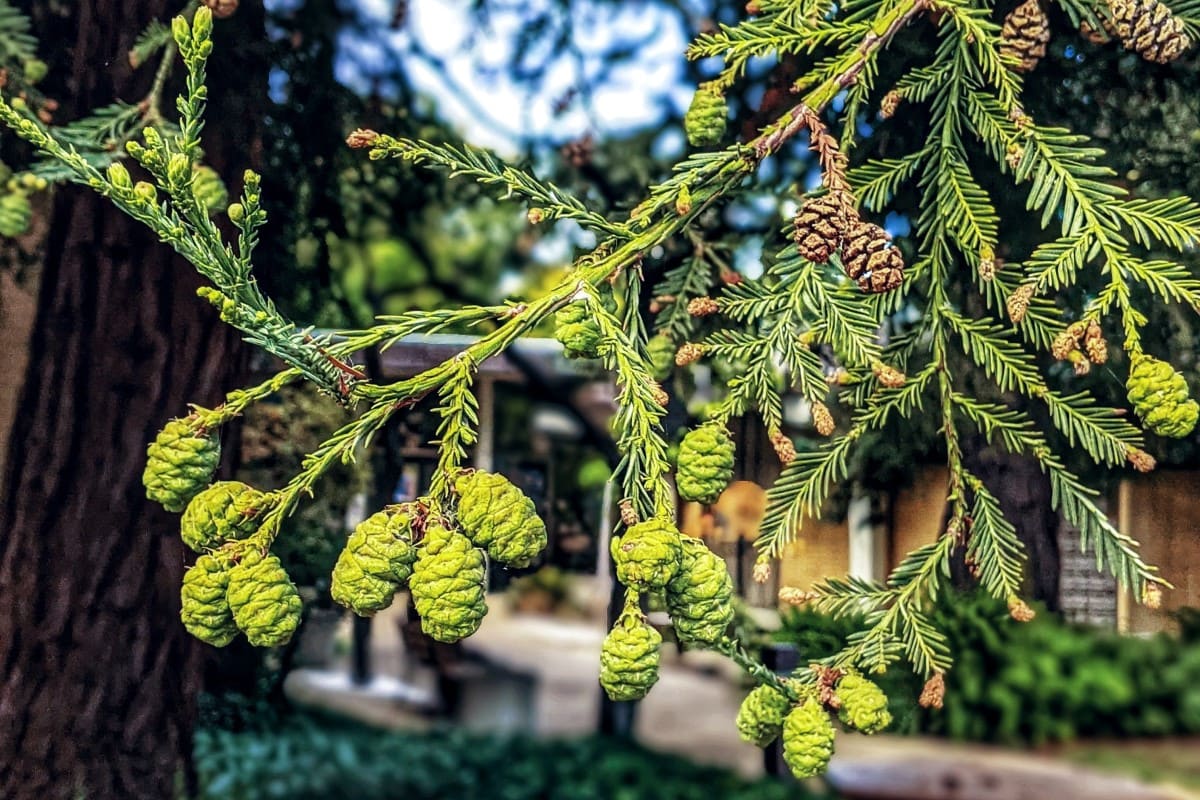
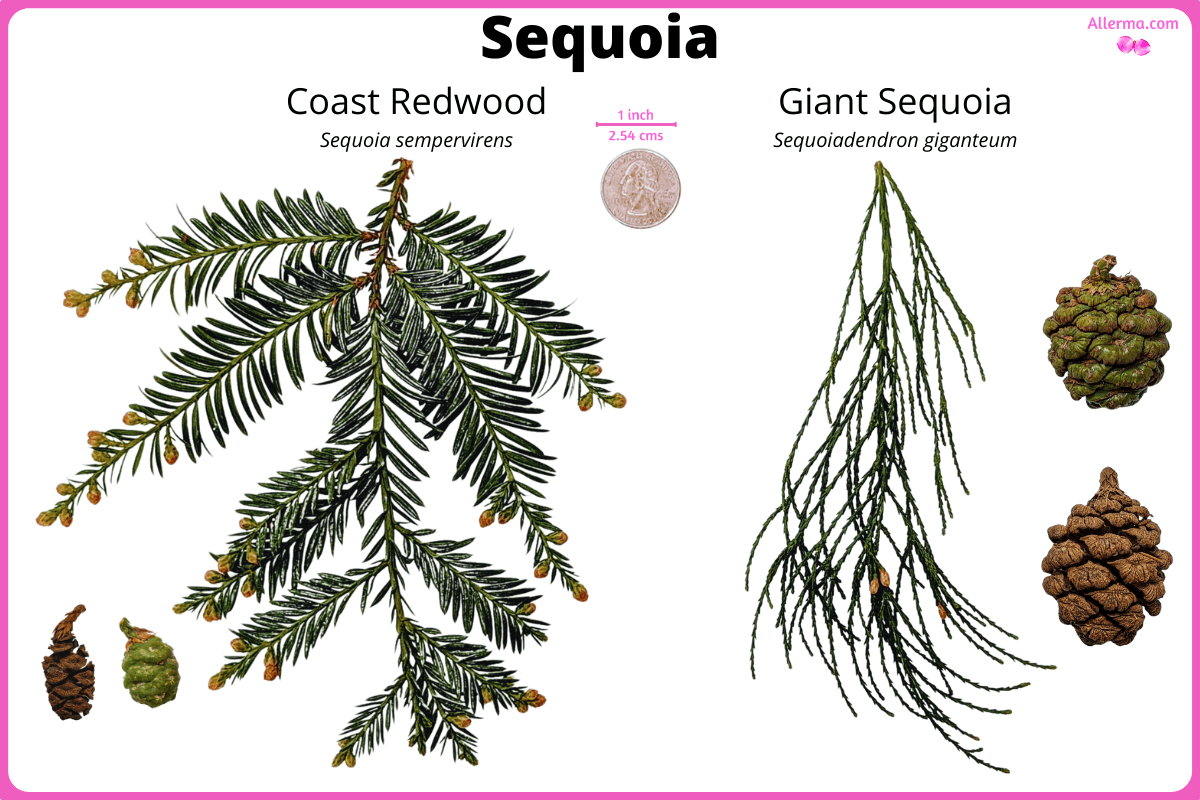
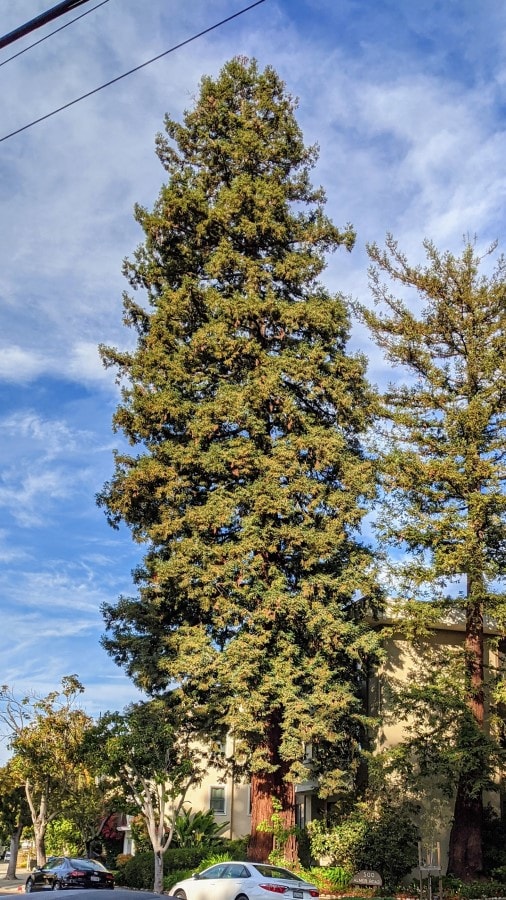

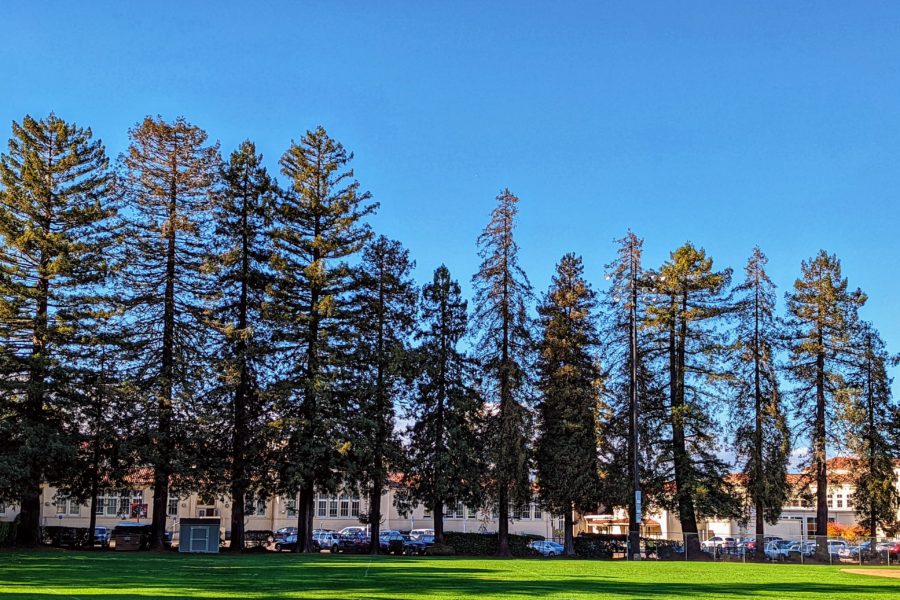
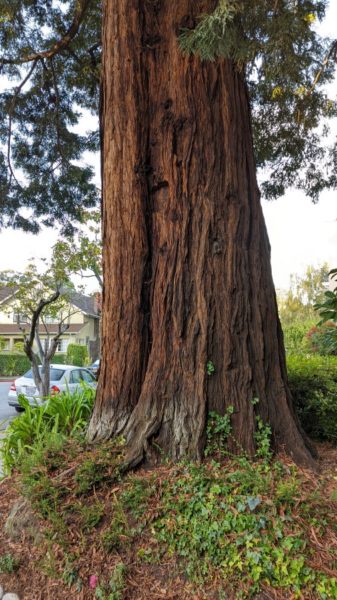
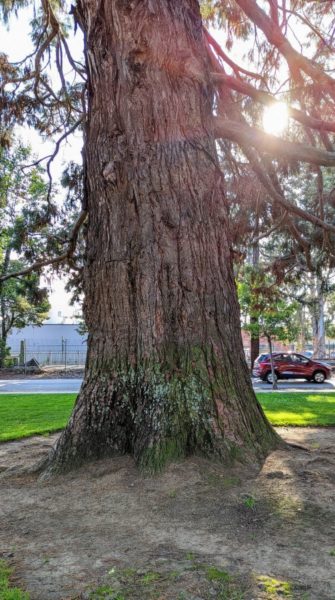
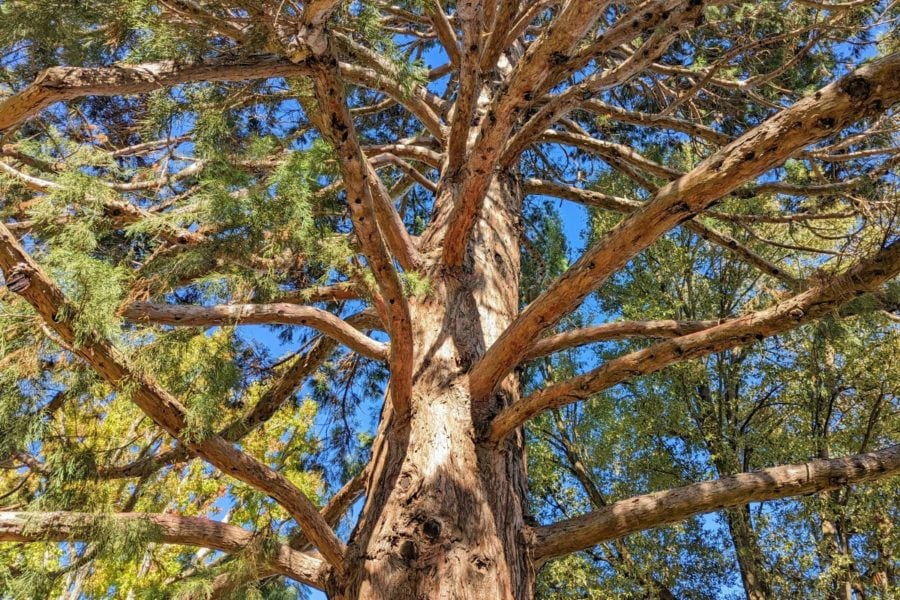

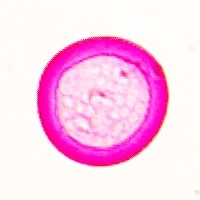
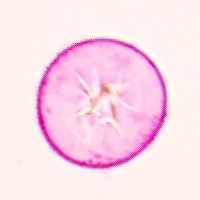
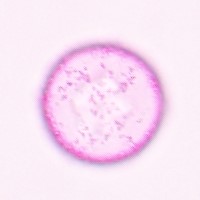

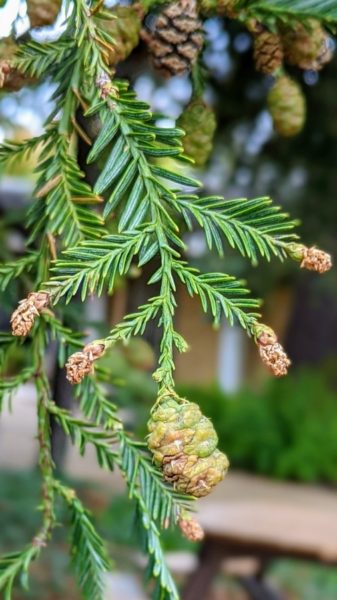
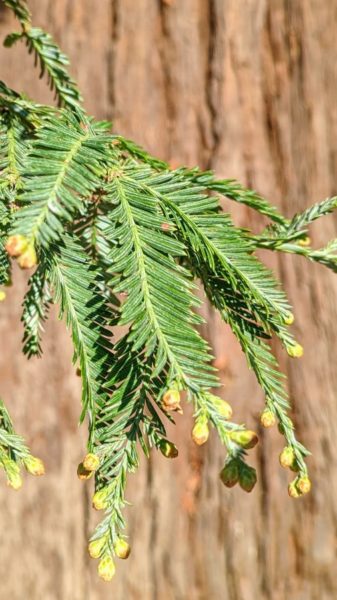
Does the pollen release timeframe described here change as one travels further north? We were in one of the groves on the Avenue of the Giants today, May 9th, and in the late afternoon sunlight you could see the air filled heavily with particles drifting to the ground from all around the trees and up to their greatest heights. I did shoot some video of the phenomenon.
If you can see them in the air drifting they are not pollen. Pollen is too small to be visible drifting in the air. There are exceptions, such as large pollen of pine family, which can be seen on windshields or as a burst of yellow cloud if the pollen laden tree is shaken. In May, you are more likely to see fully formed seeds on the Sequoias than pollen. I don’t believe going up north will make that much of a difference.
what allergy medicine is most effective against redwood and related trees allergy symptoms?
Hi Rick – Thank you for your question. Unfortunately, I can not recommend medicine because I am not a doctor. I research pollen and not the patients. However, you may find this article on pollen allergy useful. https://allerma.com/education/pollen-allergy-guide/
Hi Sudhir, Thanks for the quick reply! Please know that I would not ask about medication. I was actually most concerned to know about how quickly the pollination term lasts once started. There is info about when it begins is different locations, but I can never seem to discern how long it may last. After I sent my message I only then discovered the GREAT info that was deeper in your site. And it looks to be VERY HELPFUL! Thank you for the pdf and all that you have provided here. Sincere best wishes-Rick MacLaine
Hi Rick – Most species of trees produce pollen for 4 to 8 weeks, which can change from one year to another due to weather conditions. However, what make’s predicting the duration of pollen season for an entire family or genus of trees very difficult is that different species within the same family/genus produce pollen during different months and sometimes even during different season. For example, each species of Oak has 4 to 8 weeks of pollen season, but Coastal Oak, Cork Oak, and Canyon Oak together can have 5 month long pollen period because they produce pollen sequentially one after the other from March to July.
Similar variability exist with Cypress, Juniper family of trees as well and I see pollen of this family from December through June in the Bay Area.
Most allergy sufferers cross-react to pollen within the same family of trees, so presence of several different species of trees of the same family in your neighborhood will prolong the allergy season for you.
But, if you do see a tree blossoming in your own front yard, you can be sure that it will probably be done in 4 to 8 weeks.
Wishing you good health!
Sudhir.